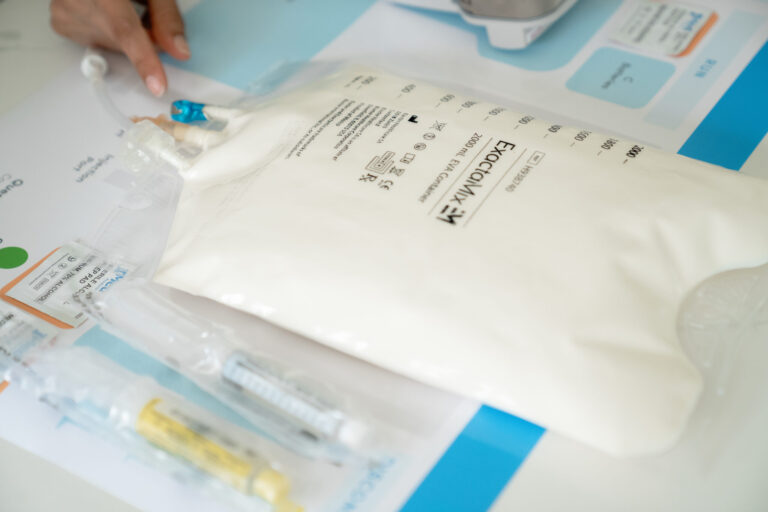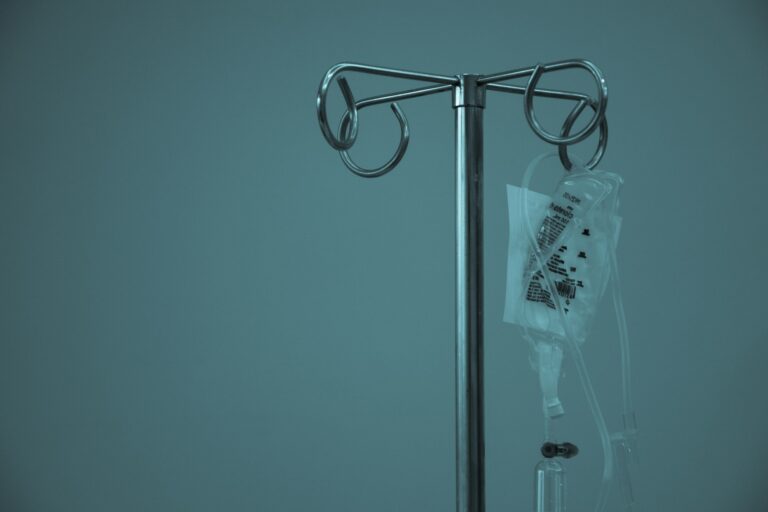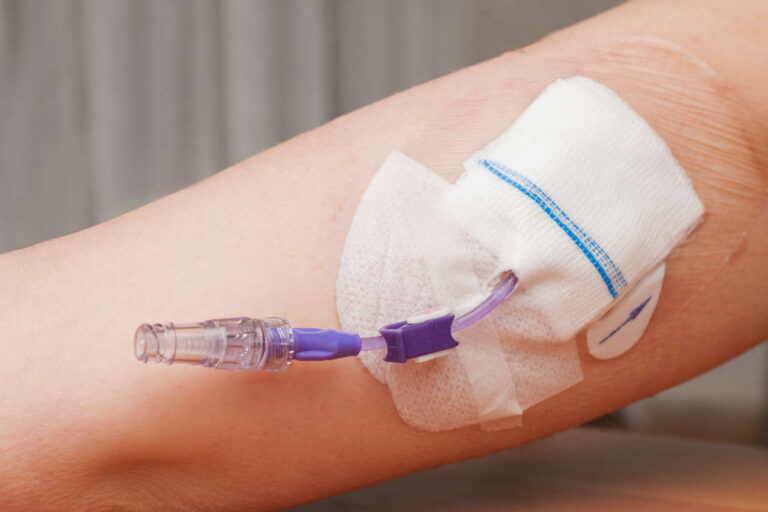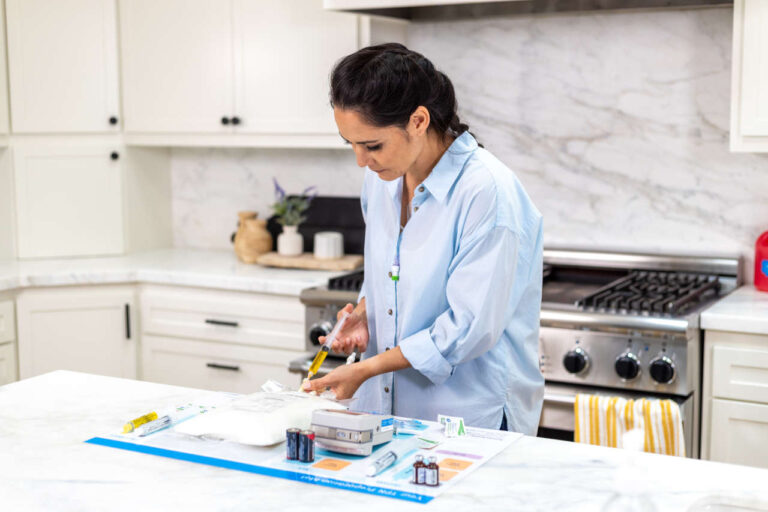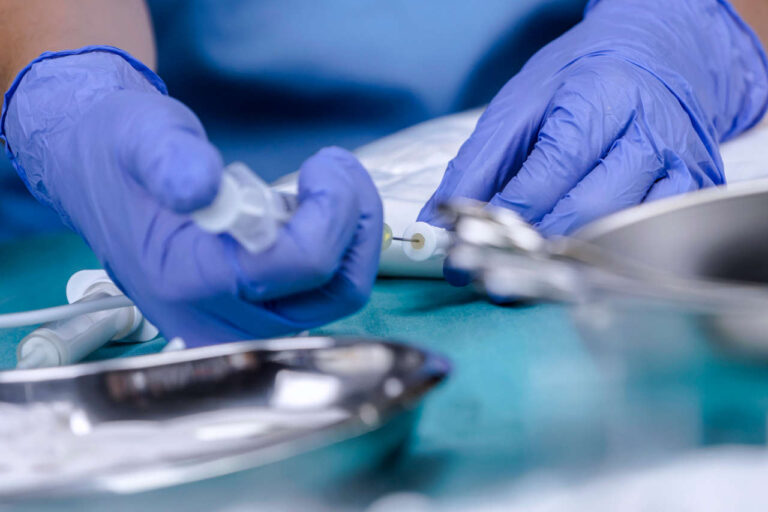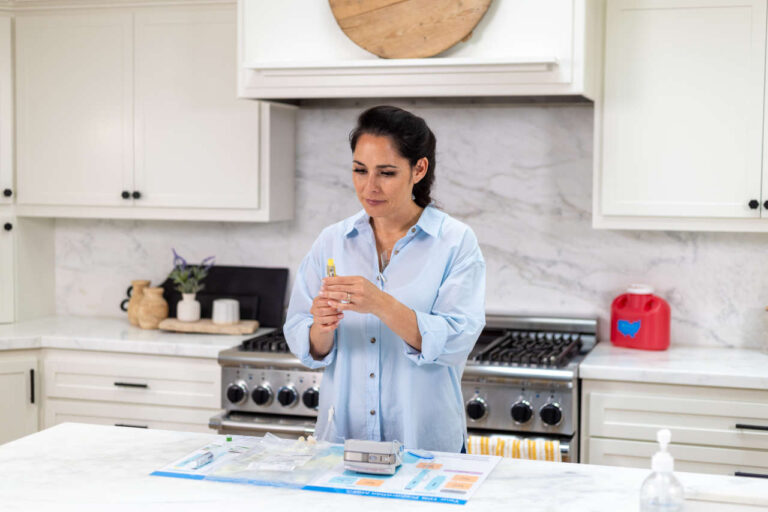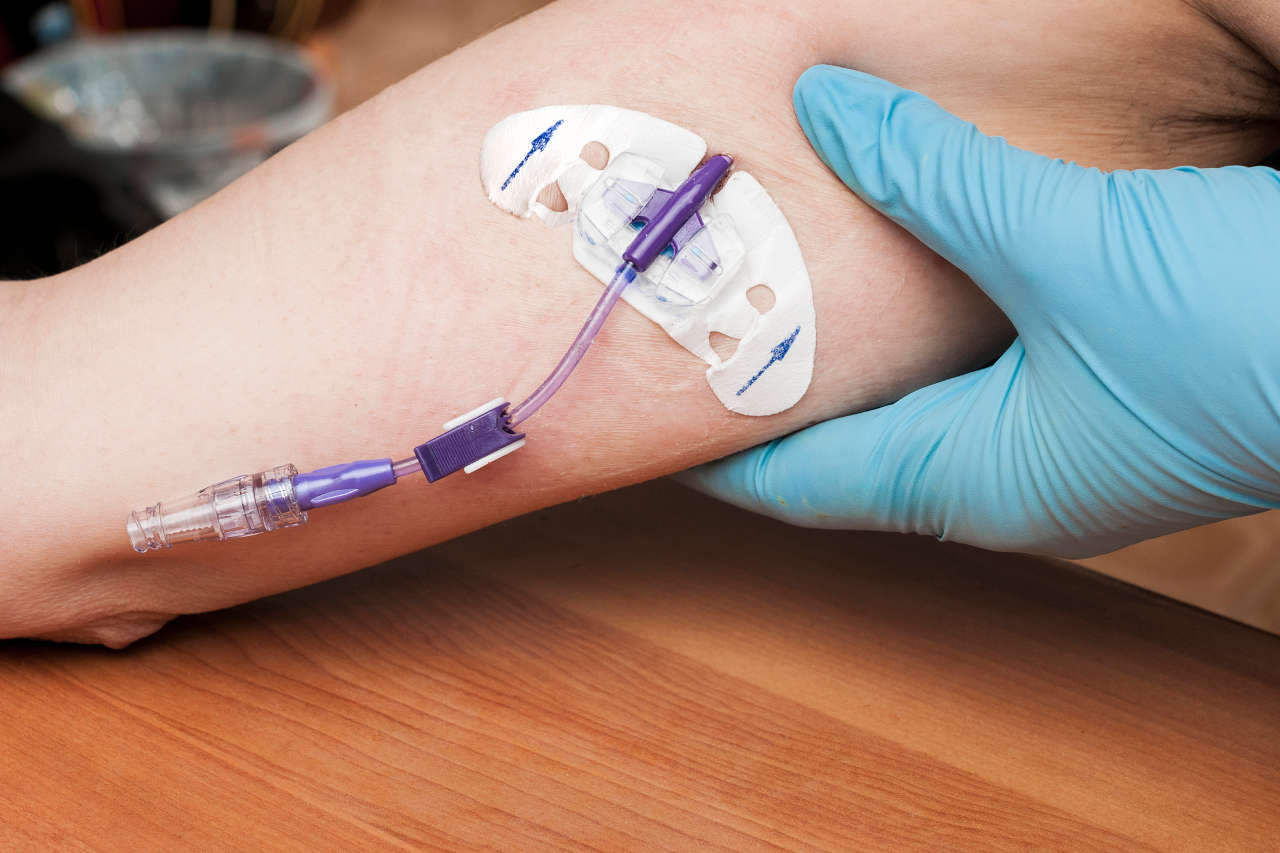
Nếu bạn Liệu pháp TPN (dinh dưỡng hoàn toàn qua đường tĩnh mạch) dự kiến sẽ kéo dài đến vài tuần, chẳng hạn như trong vòng 2 đến 6 tuần, bạn có thể sẽ được đặt đường truyền PICC thay vì đường truyền IV thông thường.
Dịch truyền tĩnh mạch của bạn, luôn có sẵn
Hàng tồn kho đầy đủ, truy cập dễ dàngỐng thông PICC, còn được gọi là ống thông trung tâm đặt ngoại vi, là một ống dài, siêu mỏng, mềm dẻo (ống thông) được đưa vào một trong các tĩnh mạch ngoại vi (chẳng hạn như tĩnh mạch nền hoặc tĩnh mạch đầu) ở cánh tay trên. Sau đó, ống được đưa qua một mạch máu lớn hơn dẫn đến tim, chẳng hạn như tĩnh mạch dưới đòn hoặc tĩnh mạch chủ trên, thường xuất hiện ngay phía trên bên phải tim của bạn.
Quy trình đặt đường truyền PICC chủ yếu được thực hiện bởi y tá hoặc trợ lý bác sĩ bằng kỹ thuật vô trùng.
Trước khi trải qua quá trình điều trị TPN thông qua các đường truyền PICC, điều quan trọng là phải biết tại sao nó được coi là lựa chọn ưu tiên cho Truyền dịch TPN, cách đặt và những rủi ro hoặc biến chứng nào bạn có thể gặp phải trong quá trình TPN hoặc sau đó Truyền dịch TPN.
Tại sao đường truyền PICC được sử dụng cho liệu pháp TPN thay vì đường truyền tĩnh mạch thông thường hoặc các đường truyền trung tâm khác?
Có một số lý do khiến các nhà cung cấp dịch vụ chăm sóc sức khỏe cân nhắc việc cung cấp dịch truyền TPN qua đường truyền PICC thay vì đường truyền tĩnh mạch thông thường hoặc đường trung tâm:
Nó cung cấp quyền truy cập dài hạn
Dây PICC được thiết kế sao cho có thể duy trì tại chỗ trong vài tuần hoặc thậm chí vài tháng. Khả năng tiếp cận lâu dài này giúp bệnh nhân dễ dàng tiếp nhận liệu pháp TPN trong tối đa vài tháng mà không cần phải đặt lại thường xuyên.
Hơn nữa, không giống như đường truyền tĩnh mạch (IV) thông thường ngắn hơn, đường truyền PICC là một ống siêu mỏng, dài giúp dễ dàng tiếp cận tĩnh mạch lớn hơn gần tim.
Nó làm giảm sự khó chịu
Dây truyền PICC làm giảm sự khó chịu do kim tiêm đâm nhiều lần vào đường truyền tĩnh mạch thông thường và có thể truyền một lượng lớn dịch truyền tĩnh mạch, điều mà đường truyền tĩnh mạch thông thường không thể thực hiện được.
Nó giảm thiểu nguy cơ nhiễm trùng
Các dòng PICC được coi là an toàn và tiết kiệm chi phí vì họ có nguy cơ nhiễm trùng thấp hơn hơn các đường truyền tĩnh mạch trung tâm khác và các đường truyền tĩnh mạch thông thường.
TPN được truyền qua đường PICC như thế nào?
Để truyền dịch TPN qua đường truyền PICC, trước tiên nhà cung cấp dịch vụ chăm sóc sức khỏe sẽ đặt đường truyền PICC.
Quy trình đặt đường truyền PICC
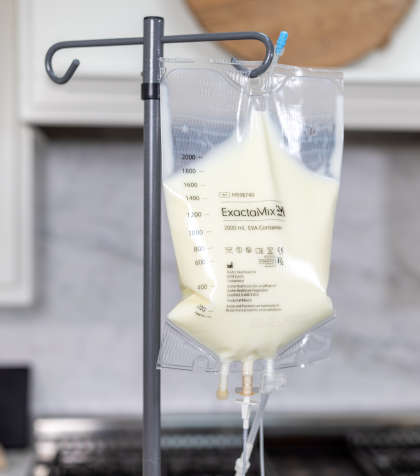
Quy trình đặt ống thông PICC mất khoảng một giờ và thường được thực hiện trong phòng sinh hoạt chung được trang bị công nghệ hình ảnh, chẳng hạn như máy chụp X-quang. Để đặt ống thông PICC, bác sĩ sẽ thực hiện các bước sau:
- Làm sạch vị trí tiêm và tiêm thuốc tê, chẳng hạn như lidocaine 1%, vào vị trí tiêm ở cánh tay trên. Thuốc tê giúp giảm đau và khó chịu trong quá trình rạch.
- Sau khi tiêm thuốc gây tê, bác sĩ sẽ cẩn thận rạch một đường nhỏ để tiếp cận tĩnh mạch và đưa ống PICC vào tĩnh mạch.
- Đường PICC được luồn nhẹ nhàng vào mạch máu và tiến về phía tim bằng sóng siêu âm.
- Sẽ chụp X-quang ngực để đảm bảo đường truyền PICC được đặt đúng vị trí.
- Sau khi chụp X-quang xác nhận đường truyền, bác sĩ sẽ cố định đường truyền bằng băng hoặc khâu.
- Hai hoặc ba ống nhô ra khỏi da của bạn, được gọi là lumen, sẽ được sử dụng để đưa dung dịch TPN vào cơ thể bạn.
Truyền TPN qua đường truyền PICC
Sau khi hoàn tất việc đặt ống thông, bác sĩ sẽ bắt đầu quy trình truyền TPN. Để tìm hiểu cách bắt đầu quy trình truyền TPN, hãy đọc bài viết của chúng tôi.: Hướng dẫn từng bước đầy đủ về cách sử dụng TPN.
Hỏi về máy truyền dịch tại nhà TPN
Bạn chăm sóc và bảo dưỡng đường truyền PICC như thế nào sau khi truyền dịch TPN?
Sau khi quá trình truyền dịch TPN hoàn tất, bạn cần phải bảo vệ và bảo trì đường truyền cẩn thận.
- Luôn rửa và khóa đường truyền PICC bằng dung dịch muối sinh lý và heparin sau khi truyền TPN. Bác sĩ hoặc điều dưỡng sẽ hướng dẫn bạn cách vệ sinh và rửa đường truyền hàng tuần để tránh tắc nghẽn.
- Kiểm tra vị trí đặt vòng hàng ngày để phát hiện các dấu hiệu nhiễm trùng, sưng tấy hoặc đỏ. Nếu bạn thấy đỏ hoặc đau xung quanh vị trí đặt vòng, hãy tham khảo ý kiến bác sĩ ngay lập tức.
- Tránh nâng vật nặng vì có thể ảnh hưởng đến đường dây của bạn.
- Không sử dụng cánh tay bị ảnh hưởng để kiểm tra huyết áp.
- Che đường PICC bằng màng bọc thực phẩm hoặc băng chống thấm nước khi tắm.
- Không tự thay băng cho đường truyền PICC; thay vào đó, hãy nhờ y tá hoặc người chăm sóc được đào tạo thay băng cho bạn.
Có bất kỳ rủi ro nào liên quan đến việc truyền TPN qua đường truyền PICC không?
Không có rủi ro cụ thể nào liên quan đến việc truyền TPN qua đường truyền PICC so với các phương pháp truyền TPN khác, miễn là đường truyền được bảo vệ và bảo trì đúng cách. Tuy nhiên, đường truyền PICC đôi khi có thể bị tắc nghẽn do thuốc hoặc cục máu đông nếu không được rửa sạch bằng dung dịch muối sinh lý và heparin sau khi truyền TPN.
Nếu đường ống bị tắc, chất lỏng TPN có thể không chảy trơn tru. Điều này đòi hỏi phải tháo đường ống và thay thế bằng đường ống PICC mới.
Khi nào nên tham khảo ý kiến bác sĩ chăm sóc sức khỏe của bạn
Hãy tham khảo ý kiến bác sĩ chăm sóc sức khỏe ngay lập tức nếu:
- Bạn bị sốt cao hoặc khó thở, ngứa hoặc chóng mặt.
- Đường ống của bạn không xả được hoặc bị tắc.
- Đường PICC của bạn bị rò rỉ.
- Bạn bị chảy máu từ vị trí đặt đường truyền PICC.
- Đường PICC của bạn vô tình bị tuột ra ngoài.
- Đường ống PICC của bạn bị lỏng hoặc bẩn.
TÀI LIỆU THAM KHẢO:
- Johansson, E., Hammarskjöld, F., Lundberg, D., & Arnlind, MH (2013). Ưu điểm và nhược điểm của ống thông tĩnh mạch trung tâm đặt ngoại vi (PICC) so với các đường truyền tĩnh mạch trung tâm khác: tổng quan hệ thống tài liệu. Acta oncologica, 52(5), 886-892. https://doi.org/10.3109/0284186X.2013.773072
- Comas, M., Domingo, L., Jansana, A., Lafuente, E., Civit, A., García-Pérez, L., … & Castells, X. (2022). Phân tích hiệu quả chi phí của ống thông trung tâm được đặt ở ngoại vi so với ống thông tĩnh mạch trung tâm để nuôi dưỡng qua đường tĩnh mạch trong bệnh viện. Tạp chí An toàn Bệnh nhân, 18(7), e1109-e1115. DOI: 10.1097/PTS.0000000000001028

